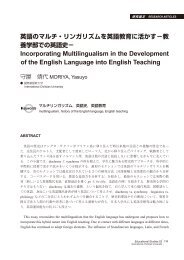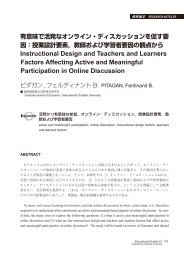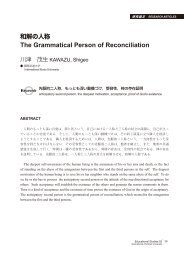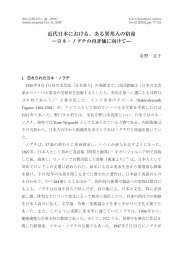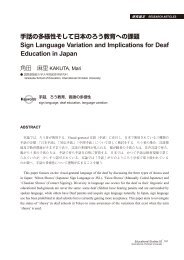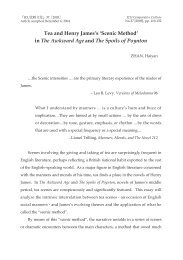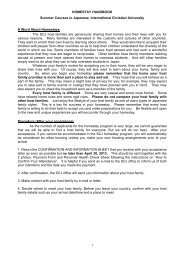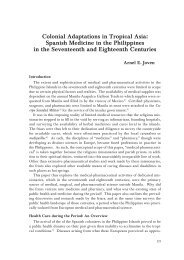Untitled - subsite - å½éåºç£æ大å¦
Untitled - subsite - å½éåºç£æ大å¦
Untitled - subsite - å½éåºç£æ大å¦
You also want an ePaper? Increase the reach of your titles
YUMPU automatically turns print PDFs into web optimized ePapers that Google loves.
2005: : 131<br />
International Workshop 2005: Human Security and Gender in Asia: Perspectives from the Humanities<br />
in Malaysia have been engaged in a constant critique of media representation of<br />
women and gender relations in the mainstream media industries. Various women<br />
images in the media were cited to demonstrate the under-representation of women<br />
and the perpetuation of gender stereotypes in the media. These women images have<br />
been used as evidence to negotiate with, or to lobby, the government agencies and<br />
corporate media companies for a more balanced gender representation. Recognizing<br />
the importance of gender representation for women, various strategies have been<br />
deployed to empower womens participation in media production, management and<br />
creative work. Increasingly, the issues of creating spaces for women to make their<br />
voices heard have become more significant. But unfortunately, women's pursuit of<br />
freedom of expression in Malaysia have been perceived as subversive by the state<br />
and various restrictions have been imposed to silence them. This paper will argue<br />
how womens rights for communication and representation are the key to media<br />
democracy in Malaysia.<br />
Young Women on Indonesian TV Screens<br />
VENNY, Adriana (Cheif Editor of Journal Prempuan)<br />
Problems of Indonesian teenage girls now have become critical, as we face the<br />
spread of sexual exploitation, paedophilia, and human-trafficking, not to mention<br />
insufficient sex education, and the bad influence of the media on consumerism.<br />
However, the Indonesian media does not have the regulatory system to protect the<br />
rights and interests of children. The presenter suggests the need for governmental<br />
control, or at least, some governmental monitoring system. The problems include<br />
the prevalence of the Western concept of beauty; the lack of an Advertising Council<br />
to raise awareness of social issues; over-sexual expressions; the prevalence of violent<br />
expressions in media. The Indonesian Broadcasting Commission is not working as it<br />
does not impose any penalty fee. So far, the government has done nothing to protect<br />
or save women. The mortality rate at birth is still high; the anti-domestic violence law<br />
has not been enacted; the anti-trafficking law has not been enacted either. What is<br />
strongly needed is an awareness raising campaign to support the enactment of laws<br />
which protects women from violence.<br />
On India<br />
RAJALAKSHMI, Parthasarathy (Lady Doak College)<br />
Indian social reality is intermeshed with diverse cultures that are reflected in variant<br />
gender relations ranging from patriarchal forms to matrilineal practices. This gender<br />
discourse focuses on five major factors that have influenced Indian psyche in evolving<br />
and internalizing gender concepts. They are Indian mythology; Religion; History;<br />
Literature; and Mass Media. There is a certain unity in Indian culture in spite of its<br />
multi-lingual, multi-religious, multi-communal and class setup and Indian mythology<br />
is a primary ethos of Indian society. Religious beliefs and traditional practices<br />
contributed to the establishment of male superiority and marginalization of women.<br />
But it is also the history of foreign invasions that situated the degradation of women<br />
s status. Representation of gender in some of the popular Indian Literature brings



